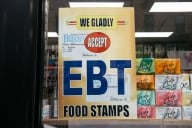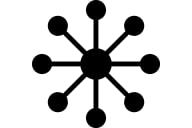You have /5 articles left.
Sign up for a free account or log in.

Wikimedia Commons
Arguments in the trial of Students for Fair Admissions, Inc. vs. the President and Fellows of Harvard College coincided with another opening: The Art of Rube Goldberg at the National Museum of American Jewish History. Coincidence? Reuben Goldberg (1883-1970), a University of California, Berkeley, engineering graduate, was celebrated for cartoons of elaborate imaginary machinery that achieved simple things with a maximum of complication. A Rube Goldberg machine is a kind of game in the guise of technology.
The organization behind the Harvard case has framed it as an attack on affirmative action, alleging that preferences for African American and Latino students, as well as for alumni children and athletes, discriminate against Asian Americans. But apart from endless arguments on the ethics and utility of racial and ethnic preferences, a more basic question has been lost: What is the logic of admissions in the coveted minority of colleges with more academically qualified candidates than they can admit?
American education itself is a Rube Goldberg contraption, a maze of state and local jurisdictions, school boards and regents (that ermine-trimmed title), testing services, accrediting agencies, homeschooling movements, and political pressure groups. American colleges and universities run everything from dairy farms to nuclear weapons laboratories. There are colleges that have abolished paper books in their libraries, and preparatory schools (notably Phillips Exeter and St. Paul’s) with magnificent book collections in structures designed by world-famous architects. There are starving college adjunct instructors and New York private school headmasters -- with lesser academic credentials -- receiving seven-figure salary and benefits packages.
Yet this organized chaos somehow works. Over 350,000 students from China alone are now studying in America. A century ago the Ivy League was modeling itself on Oxford and Cambridge; today, up to half the students at some of England’s most elite schools apply to American colleges, and many are accepted. Optimal chaos pays. As a British journalist whose own son attended Yale University put it: “The American degree system is a bit like a supermarket: after sampling some of the goods, you go to the till with your final selection.”
The world of selective admissions is a machine within a machine, as documents and testimony in the Students for Fair Admissions case is revealing. It appears to be a world of serious, intelligent people who want to do the right thing but are impinged upon by other components of the system as well as by pressures from applicants, their parents and their secondary school heads and advisers. The admissions machine must satisfy faculty members looking for the best-prepared and motivated students, coaches and musical directors who have been scouting on their own for talent to fill critical positions, arts professors coveting prodigies, and fund-raisers craving endowments. Recently it has also paid more attention to rural and small-town white students. (Asian applicants from what Harvard calls “sparse country” derive no such advantage.)
The machine is even more elaborate because there are multiple criteria. Diversity is high on the list, as it can justify just about any decision -- whether on race, ethnic background, courses of study and activities. There is also substantial evidence that diversity improves educational outcomes for white students, too. Court decisions have so far blessed it as a rationale for affirmative action. But there’s more to admission than balance. There is also “holistic” assessment, rating applicants not just by academic ability and extracurricular contributions but by character. And this is where the playing gets serious.
I’m not the first to call the process a game. Harvard started it. Two of its professors, Christopher Avery and Richard Zeckhauser, with a former associate dean of admissions at Wesleyan University, Andrew Fairbanks, used the metaphor in their 2003 book, The Early Admissions Game, published by Harvard University Press. Another Harvard professor, Louis Menand, reviewing it approvingly in The New Yorker, quoted the authors’ metaphor of a “casino on Mars,” where the rules must be guessed and may change without notice. The existence of a 400-page scholarly tome on just one aspect of admissions policy (early-action and early-decision programs -- it would take a paragraph to explain the difference) itself shows how Rube Goldbergian the process has become.
The crux of the Asian American plaintiffs’ case is likely to be not test scores (in which Asians are the highest-scoring ethnic group) or extracurricular activities (in which they are also strong) but admissions officers’ subjective ratings of candidates’ personalities. They scrutinize letters for qualities that until now have remained confidential: likability (those well-liked for being likable?), courage (however that is measured in teenagers) and “positive personality.” Can Asian candidates really be so deficient in such qualities that their SAT scores must be a full 140 points higher than those of whites to be admitted to Harvard?
Whatever the merits of holistic admissions, the disparity points to the Achilles' heel of the process. In the end it is, for better or worse, an island of almost pure intuition in a sea of credentials. Admission officers spend much of their time competing for a small number of outstanding candidates, but their judgment of most individuals is based on subjective interpretations. I doubt that the Students for Fair Admissions attorneys will find evidence of direct anti-Asian prejudice. Harvard’s admission office, like those of its peers, seems sincerely committed to doing the right thing. Yet so far neither Harvard’s critics nor its defenders have said much about the possibility of unconscious attitudes in decisions -- ironically, because Harvard is a center for the study of implicit bias.
Admissions officers trying to judge long-term character traits also should be aware of research from Harvard Medical School on the continuing development of the adolescent brain, research that helped lead the Supreme Court to bar capital punishment for 16- and 17-year-olds. A 2012 article in The Harvard Business Review cites the work of the Harvard social psychology professor Daniel Gilbert on our tendency to reach conclusions about people’s fixed character without considering the influence of changing environments, an effect called correspondence theory and the fundamental attribution error, popularized by the writer Malcolm Gladwell in his bestselling The Tipping Point.
There are also cultural factors on the applicant side. Asian American families span widely different heritages and economic circumstances. But Americans’ traditional Promethean individualism -- of which both Bill Clinton, Hillary Clinton and Donald Trump are exemplars in their own ways -- is not a universal virtue. The idea of cultivating a winning personality is a strongly Western one, represented by such gurus -- never out of print -- as Norman Vincent Peale and Andrew Carnegie, and is reflected in the Harvard criterion “positive personality.” Even 50 years ago, Ivy League lore recognized this kind of self-fashioning. I recall a saying from my undergraduate Princeton University years in the 1960s: “Be yourself. If that doesn’t work, be somebody else.” In 1967 a group of Princeton sophomores took this adage to heart and created a dossier for an ideal (white male) applicant, J. D. Oznot, who was duly admitted to the Class of 1968 in an elaborate hoax on the admissions office. A real confidence man, James Hogue (this time sporting the exotic surname Alexi Santana and a fictitious Utah backstory), not only was admitted but showed up on scholarship and was even welcomed into one of the top eating clubs. Neither prank nor outright fraud seems to have given Ivy League admissions officers second thoughts about their methods.
In time the Oznot affair became nostalgic legend, while Hogue missed every chance to redeem himself. The pretenders had something in common -- they knew the rules of the game, as far as they could be discerned in the Martian casino.
In contrast to the generations, sometimes centuries-old traditions of cramming for national examinations in China, Japan, Korea and even France, the holistic American way has engendered a conscious quest for bespoke selfhood, a mass drive for uniqueness, almost unknown elsewhere yet -- in true Rube Goldberg fashion -- sought-after globally. It has spawned a network not so much of cram schools as of coaches, sports and science camps, philanthropies, and even whole estates configured for the training of budding star athletes, according to a recent Wall Street Journal article.
The assembly of credentials and endorsements leading to successful admission has become a life template for many ambitious students of all backgrounds. The result has been what might be called premature portfolio syndrome, not necessarily healthy for minds and personalities still in development. The ability of well-intentioned admissions officers to predict future performance (as opposed to competing with their peers at other colleges for the most highly rated candidates), unlike the skill of university investment specialists in picking securities, remains as impossible to predict in the long run as it did decades ago, when Harvard rejected the “sparse country” applicant Warren Buffett. Harvard has been home to the leading longitudinal investigation of college graduates, the Grant Study of the psychiatry professor George Vaillant, but it’s not certain whether to what extent the later life experiences of Harvard sophomores of 1937 can be generalized to humanity, much less inform Harvard admissions policies today.
The racial and ethnic basis of the Harvard lawsuit may have brought important documents to light, but it has also tended to obscure an issue often noted but never resolved. Is the pitch of competition a healthy force for genuine excellence, or has the game finally turned into self-parody? Could the alleged discrimination against Asian Americans stem from their misunderstanding of the invisible rule book? How could they have known about Harvard’s “busy and bright” designation, a phrase emitting an almost audible buzzer, or even gong?
Looking beyond ethnic equity, this case is an opportunity for Harvard and other universities to consider their policies in the light of the behavioral and social science they have conducted themselves. Perhaps we shouldn’t rage against the clunky and costly admissions machine; perhaps it can be shown to be the best compromise possible in an imperfect world. But let’s not assume that. Let’s not wait for a Supreme Court decision.
Many relevant ideas are already there. It’s time for college presidents to read more books by their own faculty members.








